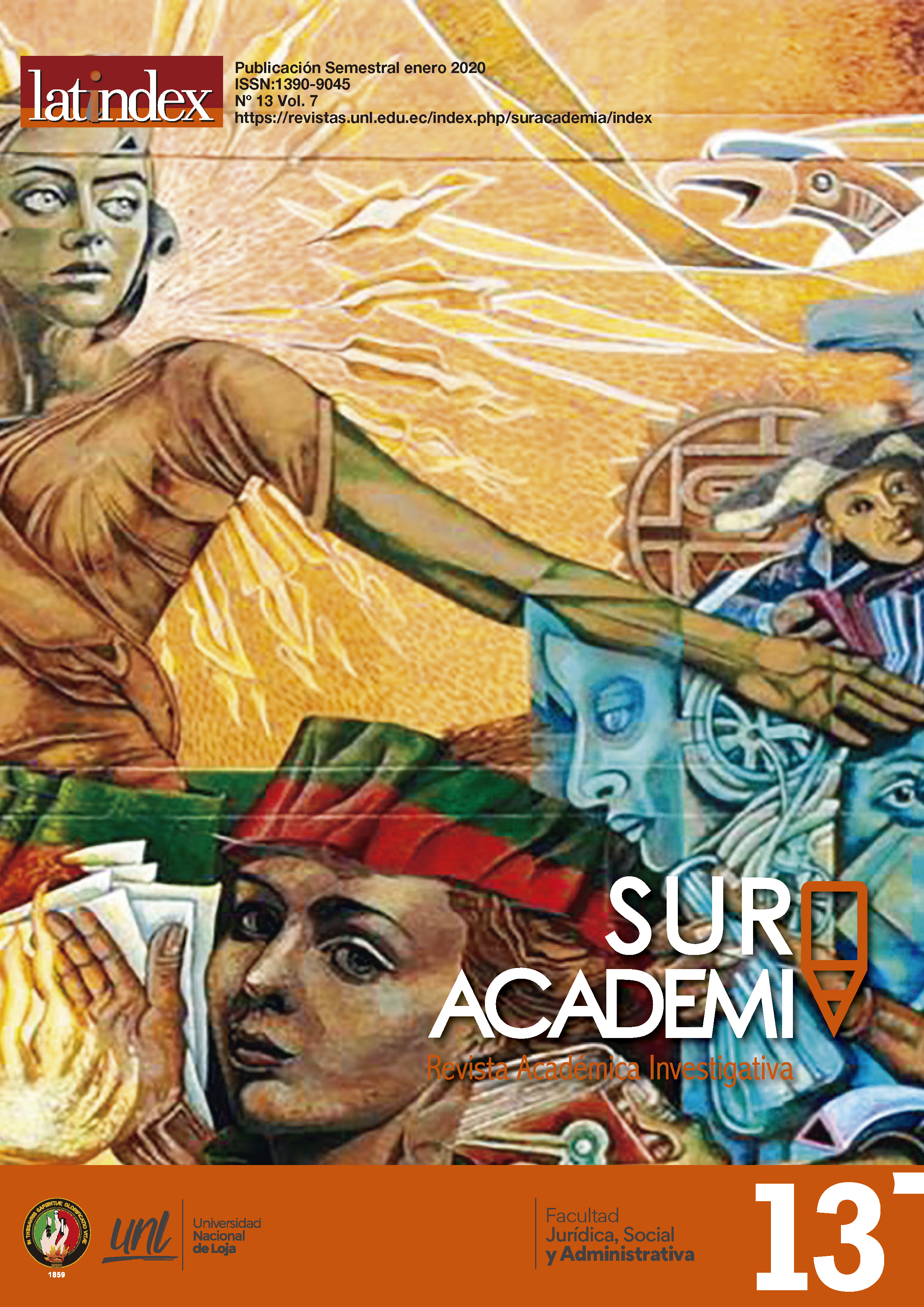Right to communication and information: Analysis of the applicability of the Organic Law of Communication Analysis of the applicability of the Organic Law of Communication
Main Article Content
Abstract
In Latin America there are important advances in the recognition of the right to communication in regulatory frameworks and their implementation through public policies aimed at building new media models that guarantee diversity of content and plurality of voices in the public debate. In Bolivia and Ecuador, the right to communication is recognized in the Constitution, in Argentina and Uruguay, laws were passed to democratize the spectrum of audiovisual media, and in El Salvador, reforms of the law that at least recognize the community media and democratize access to radio spectrum (Herrera Lemus, 2017).
In recent years Ecuador has been the protagonist of significant changes especially in the social, economic and political sphere; One of these changes is to have a regulatory framework that responds to citizens access to communication. Given this need of the Ecuadorian people and to regulate the media power to guarantee this right, on June 25, 2013, with Official Registry No. 22, the Organic Law of Communication was promulgated which aims to develop, protect and regulate, in the administrative field, the exercise of the rights to communication established constitutionally (LOC, 2013).
Organic Communication, in favor of citizens, through the Superintendence of Information and Communication (Supercom), an organization that was created to guarantee access and exercise of the rights of people to receive truthful, objective, timely, plural information , contextualized, without prior censorship; and, to a free, intercultural, inclusive, diverse and participatory communication in all areas, through surveillance, audit, intervention and control of compliance with regulations, as a livelihood for Good Living (Supercom, 2018).
In recent years Ecuador has been the protagonist of significant changes especially in the social, economic and political sphere; One of these changes is to have a regulatory framework that responds to citizens access to communication. Given this need of the Ecuadorian people and to regulate the media power to guarantee this right, on June 25, 2013, with Official Registry No. 22, the Organic Law of Communication was promulgated which aims to develop, protect and regulate, in the administrative field, the exercise of the rights to communication established constitutionally (LOC, 2013).
Organic Communication, in favor of citizens, through the Superintendence of Information and Communication (Supercom), an organization that was created to guarantee access and exercise of the rights of people to receive truthful, objective, timely, plural information , contextualized, without prior censorship; and, to a free, intercultural, inclusive, diverse and participatory communication in all areas, through surveillance, audit, intervention and control of compliance with regulations, as a livelihood for Good Living (Supercom, 2018).
Article Details
How to Cite
Jaramillo Castillo, F. R. (2020). Right to communication and information: Analysis of the applicability of the Organic Law of Communication: Analysis of the applicability of the Organic Law of Communication. Sur Academia: Revista Académica-Investigativa De La Facultad Jurídica, Social Y Administrativa, 7(13). Retrieved from https://revistas.unl.edu.ec/index.php/suracademia/article/view/666
Section
Artículos de Investigación científica y tecnológica

This work is licensed under a Creative Commons Attribution-NonCommercial-NoDerivatives 4.0 International License.
Sur Academia proporciona acceso inmediato y gratuito a todos los contenidos de esta edición electrónica. La publicación no tiene ningún coste para los autores.
References
La emergencia de las tecnologías digitales; la aparición de un nuevo ecosistema comunicativo que tiende a sustituir el modelo comunicativo basado en la trasmisión hacia un modelo basado en la construcción social de sentidos; la centralidad de la información y la comunicación en el desarrollo y el funcionamiento social contemporáneo. José Ramón Vidal (2017).
El nuevo derecho a la comunicación aspira a ser un instrumento para regular, desde una intencionalidad equitativa y democrática. Romel Jurado (2012).
La legislación internacional reconoce que todo ser humano, por el hecho de serlo, tiene derechos frente al Estado, derechos que éste debe respetar y garantizar. Por su naturaleza los Derechos Humanos son integrales, universales e indivisibles. Doyle, M. (2012).
El nuevo derecho a la comunicación aspira a ser un instrumento para regular, desde una intencionalidad equitativa y democrática. Romel Jurado (2012).
La legislación internacional reconoce que todo ser humano, por el hecho de serlo, tiene derechos frente al Estado, derechos que éste debe respetar y garantizar. Por su naturaleza los Derechos Humanos son integrales, universales e indivisibles. Doyle, M. (2012).

